May 4, 2020
Flows: 223 cfs.
Water Temp: 42 @ 9a. 49 @ 12N.
Water clarity: Crystal clear.
Air Temp: low-50s @ 9a – mid-70s @ 5p.
Hatches: Light midge – 9a and heavier at 4p, spotty BWO 11a to 3:30p. Also spotted a few caddis.
The beginning of Horseshoe Bend.
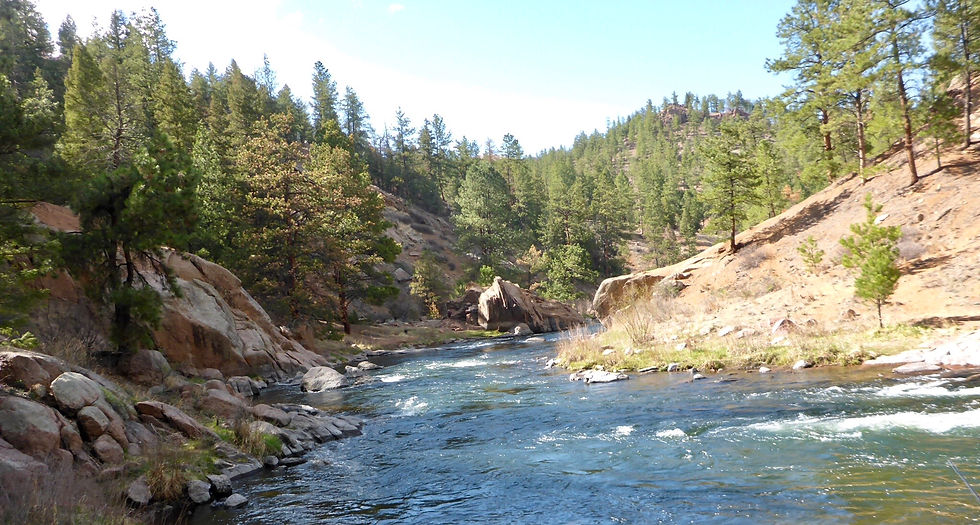
Brian and I have been planning to go into the Horseshoe Bend for the past few weeks, but for some reason or the other never made it in - until yesterday. I’ve fished it many years ago – in fact, it has been so long ago that I don’t remember much about it. They say that horseshoes are lucky or bring luck. And we had a lucky day. A beautiful, crisp Colorado spring day, willing fish, and the whole place to ourselves. And somehow Brian was able to find his wading stick, which he lost a few weeks ago.
But before we hiked in Brian was able to get a little fishing in at the Between the Islands Run. He had arrived about a half hour before me and decided to get a little fishing in while he waited. It paid off as he landed a 15” rainbow before I got there. He took it in the mid-river seem on a #22 black beauty.
15" female taken in the Between the Islands Run.
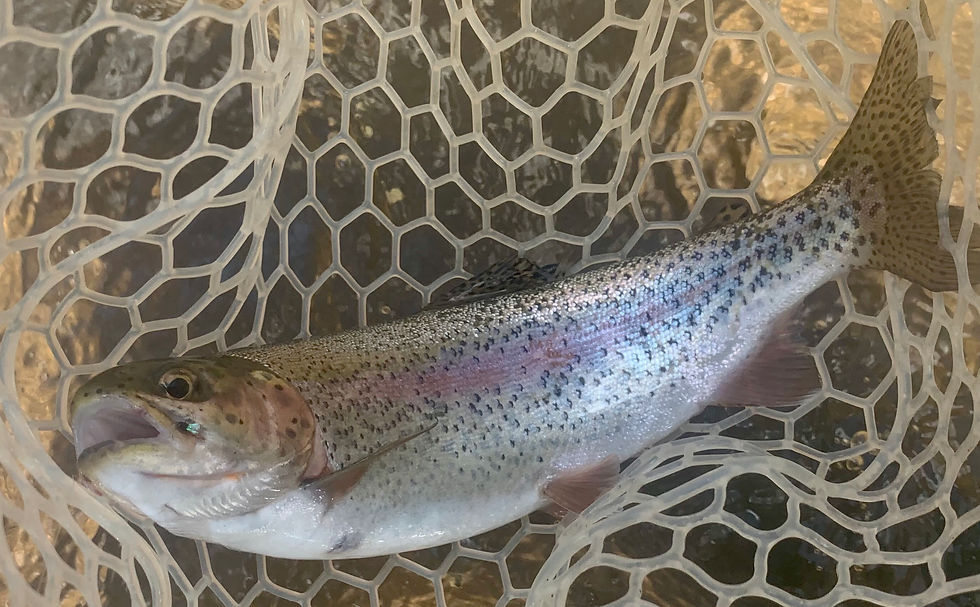
Photo courtesy of Brian Kenney.
There’s a few ways to get into the Bend and we chose the hike up over the southeast canyon wall so that we would end up on that side of the river. It turned out to be more of a challenging hike than we thought – but it dropped us down exactly where we had planned. In a hole we named Sleeping Indian because of a rock formation that looks like a mini-mountain that is visible from the Front Range - and which Coloradans call The Sleeping Indian.
The Sleeping Indian Hole.

Brian hit the hole first while I was rigging up with nymphs. At the time, we didn’t see any fish in it – but it looked too fishy to pass up. By the time I was done rigging up, Brian had moved on. So I figured I my as well give it a try. My rig was setup with a #18 Red Midge Larva leading, followed by a #20 Mercury Miracle Midge and a #20 Black Manhattan Midge. I was using larger midge patterns because in the spring the naturals are larger than in the other seasons.
This hole is pretty tricky to fish. It has two eddies – and then a tail out – and it is somewhat difficult to get a good drift into the feeding lanes. After spending about an hour trying to entice a hit with no luck – I decided it was time to move on too. But just as I was getting ready to leave, I spotted a few fish - and then several more. So I decided to stay. I could clearly see the fish feeding in both of the eddies and the tail out. Some were feeding just off the bottom and some were feeding midway to the surface and some were even higher up. Looked like a no brainer!
It didn’t turn out to be though. After several changes to depth and weight, changing to a Dropper/Hopper setup, and spending a few hours I was only able to land a couple of smaller fish - a rainbow and brownie in the 12” to 14’ range. I landed both with my nymph rig and they both hit on the swing and lift. One hit a #20 Black Manhattan Midge and the other hit a #24 Black Bling Midge.
Here's a 14" female rainbow who took the #20 Black Manhattan Midge.

While I spent the whole morning in the Sleeping Indian hole - Brian was downstream where he landed a nice 16” brownie at the tail out of a run. He fooled it with a # 20 black zebra midge with glass bead.
16" brownie. Notice the unusual dark spot just behind his eye - she has one behind her other eye too.
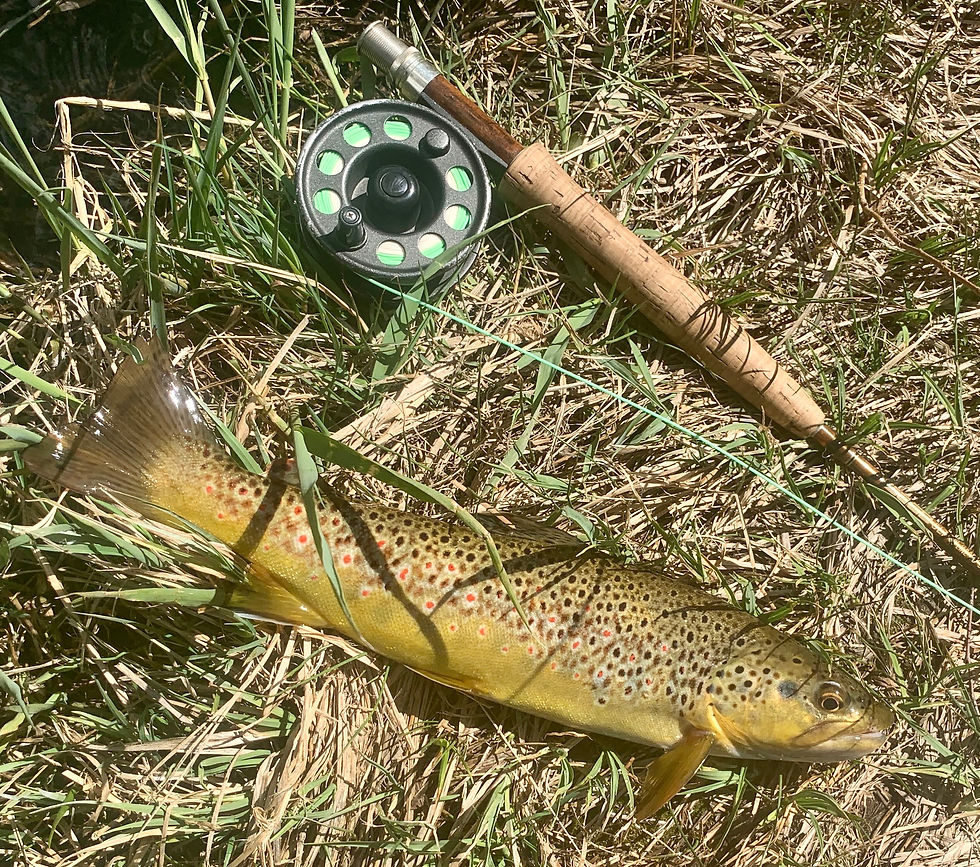
Photo courtesy of Brian Kenney.
Brian joined me for lunch and chided me for my self professed bad habit of staying after fish that I can sight – but have little success in landing. But since I’m not counting fish anymore - I made a conscious decision to stay in the hole to see if I could crack the code and maybe learn something. While eating lunch and thinking trough the morning - three things that came to mind: since the water was very slow, clear, and deep smaller midge patterns might have worked better. The fish seemed to be very selective – so using both midge and baetis patterns could have ID’d if they were eating one or the other. And finally, changing patterns more (I only changed my flies once) would have again helped me ID what they were eating. So I stored this away this for next time.
After lunch we moved downstream and explored the whole bend. It has a lot of nice riffle, runs, pools, and tail out water. There is also lots of pocket water.
View along the Horseshoe Bend.

I found a nice section that begins with a pretty fast riffle flowing into a bend that forms a deeper run. Below this are a couple of nice seams and pockets. When I came up to the first riffle it was obvious that I needed to fish it from mid-stream. As I waded into the water – I spooked a couple of fish. So I moved downstream with the intention of coming back up to the riffle area.
Lone Rock Campground Run.

I was fishing one of the mid-stream seams while walking downstream and took my eye off of my indicator to look into one of the pockets to see if there were fish in it. Just then a fish hit – and for some reason I didn’t execute a good hook set. Rather I kind of pulled my rod back as if I was snagged on something. But I wasn’t – it was a nice rainbow in the 17” range – who proceeded to shake the hook free. Ugh – I need to pay attention!
Brian showed up about that time and hit the riffle at the head of the run and the deeper pool just below it. He had a lot of action with a couple of nice size fish on – one rainbow and one brownie. As the brownie took a couple of leaps out of the water, he broke the line and was able to get free. It was exciting to watch! It wasn’t long after that Brian landed a 15” rainbow in the same pool. It hit a #22 Black Top Secret Midge.
Brian took this one out of the deep run across from the Lone Rock Campground.
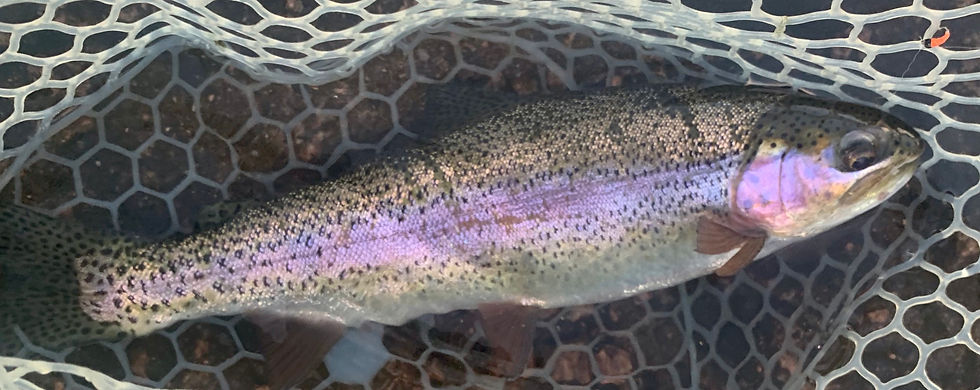
Photo courtesy of Brian Kenney.
Meanwhile I lost another nice rainbow that was in one of the pockets behind a huge boulder. For some reason, I didn’t think he would be in there – as I was just standing below it and figured I probably spooked it. But I casted in anyway – and he hit. But I didn’t set the hook. Jeez – this is sounding too familiar! Anyway he got off.
I was beginning to think that I missed my chances when I spotted a couple of fish feeding in the shallow water on the Lone Rock Camp side of the river. I had earlier changed my nymphs to baetis, and had a #16 Red Flashback Pheasant Tail leading, followed by a #20 JuJu Baetis and a #18 Flashback Barr Emerger.
In order to get a good drift without snagging on the rocks in the slow water – I had to take off all the weight. That cracked the code. In the next 30 minutes or so - I landed a 18” rainbow (hit the Barr Emerger), a 17” brownie (hit the Barr Emerger), and a 13” rainbow (hit the Pheasant Tail). All of them feeding in about ankle to knee deep seams no more than 10’ from the bank.
This 13" female took a #16 Red Flashback Pheasant Tail

This 18"rainbow took the #18 Flashback Barr Emerger.
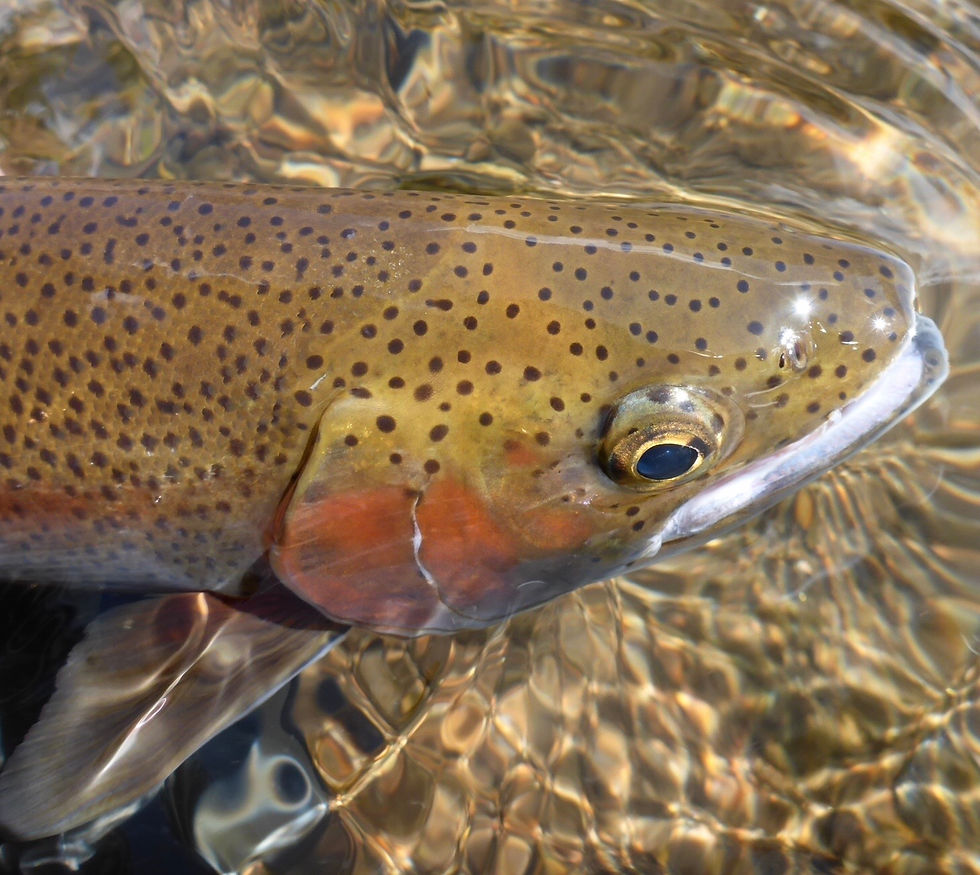
Then there was Brian’s wading stick. As mentioned earlier, he lost it crossing the river on the lower island of the Between the Island Run a few weeks ago. The lower island is about ½ mile upstream from where we were in the Horseshoe Bend. As we were getting ready to leave, Brian reached down to pick up his backpack and his lost wading stick was laying right beside it. What's the chances of finding a certain stick in a forest? Unbelievable!
The Diver Pool flowing into the Horseshoe Bend.
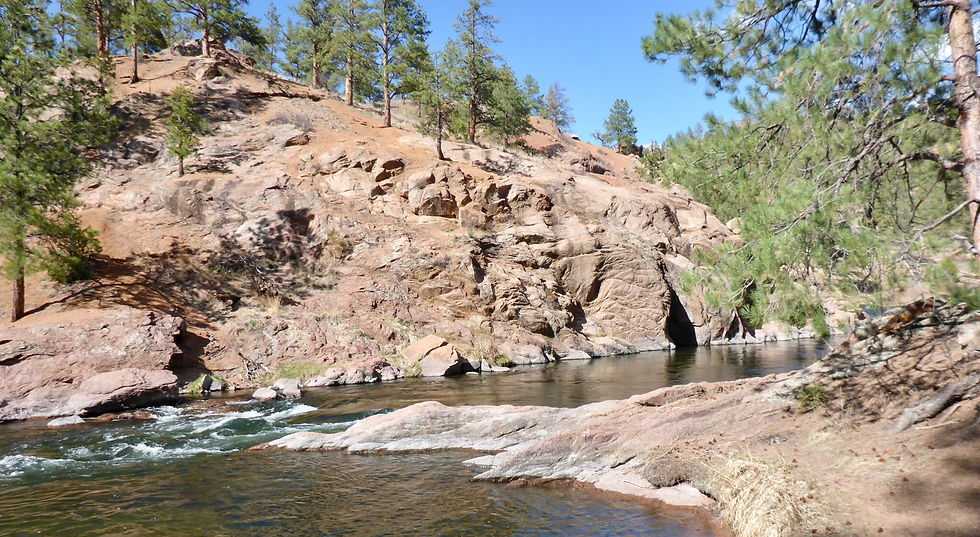
Well they say horseshoes are lucky or bring luck – or something like that!
Comments